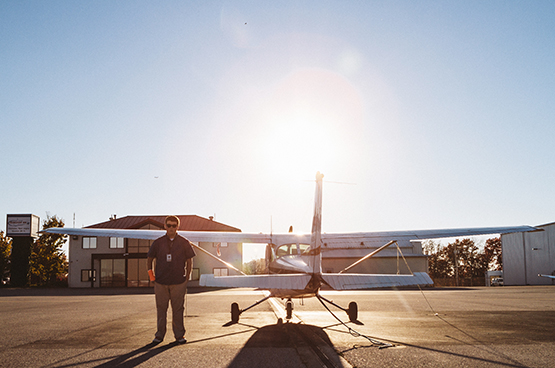Jay Haapala is a 17-year-old high school junior, an Eagle Scout, national award winner, community leader, animal lover, and aviation geek who has lived with type 1 diabetes since he was eight. He’s also just seven flying hours and a practical flight test away from being an FAA Licensed Private Pilot.
“I’ve been obsessed with flying pretty much my whole life,” said Jay.

After his diagnosis, Jay was told he’d never be given a pilot’s license. He decided to take that literally it wouldn’t be given to him, but he would earn it. He started flying lessons at age eleven, but knowing he couldn’t fly solo until he was 16, he found other ways to keep busy until then.
He volunteered as a diabetes advocate, delivering JDRF’s Bag of Hope to newly diagnosed children with diabetes. He spoke at diabetes fundraisers and introduced VIPs at diabetes events in West Virginia. He visited more schools that he can count, sharing his diabetes experience with audiences of all ages, spreading his message that whatever it is that you want to do, diabetes shouldn’t stop you.
In 2011, Jay participated as a delegate in JDRF’s Children’s Congress where every two years, more than 150 children living with type 1 diabetes gather in Washington, D.C., to meet face-to-face with some of the top decision-makers in the U.S. government to help them understand what life with diabetes is like. While there, Jay spent 45 minutes in Senator Jay Rockefeller’s office, talking with him about aviation and sharing his dream of becoming an FAA Licensed Pilot.
In 2012, for his Eagle Scout service project, Jay started and chaired the JDRF Walk For a Cure in West Virginia. He liked the leadership aspect so much, he has continued to chair the event every year since.

In April of 2014, he returned to pursuing his dream of solo flight.
Before he could complete his first solo flight, he had to pass a FAA Third Class Medical evaluation, which has specific disease protocols. While this isn’t impossible for a person with type 1 diabetes, it is difficult. He enlisted an FAA Certified doctor and together they gathered the necessary documents, including all of his records since diagnosis, and eye exam results stating that his vision was 20/20 or better. Jay then took and passed a basic physical, sent his very full application folder to the FAA in Oklahoma City and waited for a decision.
“It’s really up to them whether you get it,” said Jay.
After a month passed with no word from the FAA, Jay contacted an old diabetes connection who was now doing diabetes advocacy work in Senator Rockefeller’s DC office and explained his situation. The Senator’s office contacted the FAA, and three days later Jay received medical permissions in his mailbox. Jay believes that if Senator Rockefeller had not reached out, he still would have received the permissions, it just would have taken a lot longer.
He completed his first solo flight just days later, strictly following the list of FAA protocols and decision considerations that pilots with diabetes must follow to ensure safe flight. These include specific time intervals between blood sugar tests and the amount of glucose required based on the results of those tests to keep his BG between 100 and 300 mg/dl. They also stipulate that if his blood glucose is over 300 mg/dl prior to a flight, his flight must be cancelled. If at any time during the flight his BG rises above 300 mg/dl, he must land the plane until it can be safely maintained in the target range.

When asked what he thinks it will take to make it less of challenge for people with diabetes to become licensed pilots, Jay points to advances in technology.
“It will take opening eyes to what technology is available,” he said. “With insulin pumps and CGMs we have so much more data available to us. This is something that the FAA doesn’t understand yet.”
In the meantime, Jay has passed his written test after months of studying, and is on schedule to become an FAA Licensed Private Pilot by March 2015, a certification that will truly not be a gift, but a hard-earned reward.
He is motivated to share his story through speaking and outreach to give a different perspective to anyone who thinks that diabetes is an obstacle to how they can live his or her life.
“You only get what you give,” he says and his motto is the AirTran company slogan: Go. There's nothing stopping you.

Follow Jay
Website: http://flyingoninsulin.weebly.com/
Twitter: @CRWjay
Instagram: @crwjay
Interview by Blair Ryan.
NOTE: Disconnect (NOT stop or suspend) your t:slim Pump before flying in an aircraft without cabin pressurization or in planes used for aerobatics or combat simulation (pressurized or not).
From time to time, we may pass along: suggestions, tips, or information about other Tandem Insulin Pump user experiences or approaches to the management of diabetes. However, please note individual symptoms, situations, circumstances and results may vary. Please consult your physician or qualified health care provider regarding your condition and appropriate medical treatment. Please read the Important Safety Information linked below before using a Tandem Diabetes Care product.